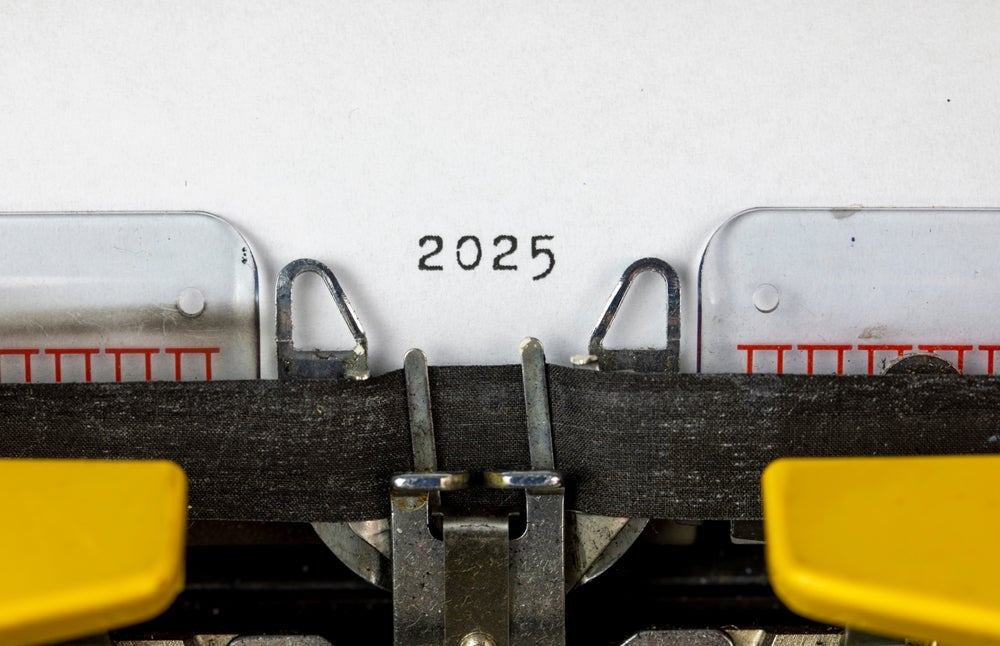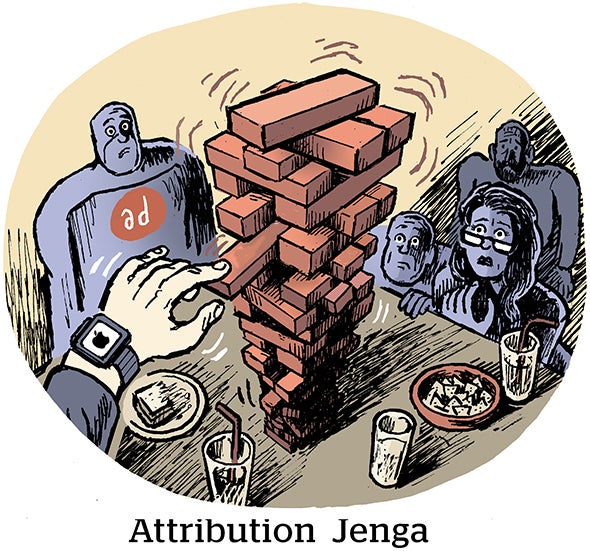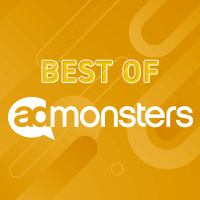“I know this campaign is old, but I still think it’s great.”
That’s how one industry expert apologetically offered his nomination for Best Overall Promotion during judging for the PRO Awards 2001 last July in New York City.
The implication, of course, is that a dusty old campaign isn’t very award-worthy, that a repeated promotion doesn’t provide the attention-grabbing buzz so vital to successful marketing these days.
Despite all the calls for out-of-the-box thinking and break-through ideas, effectiveness is still what’s most important. And the only attention a promotion needs to grab is that of its target audience.
Then again, innovation at the outset — along with a deep understanding of the consumer — is probably what gives campaigns their long-term potential. That’s certainly the case with Camp Jeep (the aforementioned “old” campaign) which captured at least one PRO Awards category for the third straight year and was just one vote shy of earning Best Overall accolades as well.
Similarly, General Mills’ Yoplait walked off with Best Long-Term Campaign honors with a straightforward on-pack cause tie-in that resonates with the brand’s core customers. Innovative? Perhaps not. But effective, relevant to the brand and its audience, and award-worthy? Absolutely.
Not that this year’s list of winning campaigns is short on innovation: DraftWorldwide turned candy marketing on its ear with an effort that sent Milky Way into nightlife hot spots on motorcycles. Brand Buzz linked up with local artists to create a new way of looking at Sony’s WEGA television. And those seeking a truly break-through idea need look no further than Ryan Partnership’s Tossed & Found campaign for GE Financial Assurance, which made an enviably strong impact on consumers, the media, and PRO Awards judges to be crowned Best Overall Campaign.
On the following pages, we’ll give you a rundown of the winning campaigns (along with another nod to the runners-up). New or old, unique or borrowed, they all possess standards of excellence — in customer insight, strategic acumen, tactical panache — that are worthy of recognition.
BEST MULTIDISCIPLINE CAMPAIGN
Campaign: Founding Fathers
Agency: In-house
Client: The History Channel, New York City
The History Channel leveraged an arsenal of tools last fall to turn what could have been perceived as a stodgy subject — a Founding Fathers mini-series — into something viewers wouldn’t want to miss.
A Wannabe President tune-in sweeps, hyped on-air during the two months leading up to the program, had viewers spotting clues before calling a toll-free number to win grand-prize trips recreating the original settlers’ journey to America. A separate flight delivered gamecards to cable affiliates to distribute to subscribers.
Online, historychannel.com chimed in with a Founding Fathers mini-site featuring interactive polls, an explanation of the electoral system (which proved popular considering the Presidential election controversy that was taking place), digital previews of the program, links to the sweeps, and classroom study guides.
Offline, a high school essay contest promoted via direct mail to 17,000 school officials offered college scholarships for winners who best described the value of the founding fathers’ contributions to America. Five million pamphlets and counter-card displays were distributed through 3,000 libraries. TV spots and outdoor billboards extended the marketing message, as did 800,000 targeted e-mails and live reenactments of colonial-era debates staged in Boston, New York City, and Philadelphia. A mobile Time Machine (the network’s year-long grassroots campaign) took the program local, with staffers handing out tune-in information and pamphlets.
“The client was looking to do something that was a little more unique than what had been done before,” says Marc Weilheimer, senior vp-account supervisor with Greenwich, CT-based Clarion Marketing & Communications, which handled the sweeps component. “This turned out to be a successful formula for attracting viewers.”
“We had a tough subject to sell,” says Artie Scheff, the network’s senior vp-marketing. “This could have been thought of as old and ‘text booky.’”
But it wasn’t. More than 26,000 viewers entered the sweeps, 5,000 students submitted essays, and Web site traffic jumped 48 percent to more than 525,000 daily page views. More than 30 cable affiliates participated, and 75 million impressions were generated via p.r. efforts. Ratings for the four-day mini-series were History Channel’s highest ever — and double network averages.
BEST USE OF ADVERTISING
Campaign: The Neal McCoy
Agency: Frankel, Chicago
Client: Fleetwood Homes, Riverside, CA
Country singer Neal McCoy is a real cut-up. He makes a pretty good cut-out, too.
McCoy was the centerpiece — both literally and figuratively — of a campaign Frankel’s Irvine, CA, office created for Fleetwood Homes after research found that 75 percent of the company’s customers ranked country music as their favorite form of entertainment.
After identifying McCoy as a good fit because of both his affable personality and his asking price, Frankel’s creatives — who weren’t familiar with McCoy or his music — flew out to meet him. “We came away with the overriding feeling that we had to capture his sense of humor,” says senior vp-executive creative director Erin Kociela. “We wanted to express his quirkiness — without being heavy-handed.”
One TV spot had McCoy sitting on his front porch, waiting to entertain anyone and anything that passed by; the other had him interacting with his own standee. The singer proved to be extremely accommodating, and even ad-libbed one of the best lines (“Are you going to eat that?” he asks the standee.) Radio spots carried the same humorous tone.
The advertising was just one component of a broad, four-month campaign that leveraged McCoy’s summer tour and the release of his latest recording, 24-7-365. Coded gamepieces handed out at concerts directed fans to retailers to see if they’d won a Fleetwood home. Sweeps entry forms were inserted into the new CD. Retailers gave away CD samplers to customers who toured homes and hosted a sweeps offering a private McCoy concert. Radio merchandising, P-O-P, and other concert activity supported the effort.
Calls to Fleetwood’s toll-free hotline tripled, retail traffic and sales increased, more retailers joined Fleetwood’s Pinnacle sales program, and the company regained the market-leader status it had lost at the end of 1999. On the personal-fulfillment side, McCoy was so impressed with Frankel’s work that he commissioned a song for 24-7-365 named after the on-site game (“Key to Your Heart”) and had associate creative director Leighton Hubble design the CD cover.
McCoy “was awesome,” says JoAnne Foist, Fleetwood’s marketing services manager. “We had customers come in and say they were buying a home because Neal told them to.”
BEST USE OF NEW MEDIA
Campaign: Motorola V2397 Launch
Agency: The Zipatoni Co., St. Louis
Client: Motorola, Schaumburg, IL
Looking to help Motorola score a direct hit with its first youth-targeted phone marketing effort, Zipatoni hooked the client up with the King of Teen: MTV.
The wireless phone manufacturer tied into Total Request Live for a holiday 2000 promotion to hook Gen Y and bump sales of a new V2397 phone — which features slick styling and two-way text-messaging — through retail partner AT&T Wireless. “We needed to make the brand relevant with an audience that wasn’t that familiar with Motorola,” says Rodney Mason, general manager of Zipatoni’s Chicago office.
To help with the familiarization, TRL host Carson Daly was recruited to appear in ads offering an MTV gift bag (featuring a TRL bag and compilation music CD) with phone purchase. An online component let consumers use the V2397 during TRL’s broadcasts to vote for their favorite songs, send messages to Daly, and enter a sweeps dangling a trip to the show’s set. A viral effort had Web site visitors sending creative e-postcards to friends and checking out interactive product demos.
Five private launch parties held in major markets generated excitement with the trade. Each event boasted performances by bands featured on TRL and showed off collateral and sell sheets from the campaign. P-O-P displays, which included a five-foot kiosk featuring Daly, were set up in all 15,000 AT&T stores. TV, radio, and print ads supported. “We watched as the momentum built,” says Mason. “The V2397 became the wireless phone of the holiday season.”
Young consumers gave the campaign a thumbs up. Some 28,000 people entered the sweeps (9,000 opting in for more product information) and 15,000 sent messages to Daly; launch parties beat attendance projections by as much as five times; and merchandise sell-through bested the target by 17 percent. “The phone became known as ‘The Carson Phone,’” says Angela McCune, senior marketing manager at Motorola. “We leveraged a property that was relevant with the target and, as a result, we resonated with that audience.”
AT&T Wireless placed a large order for the holiday 2001 selling season, and other wireless carriers have since asked Motorola to partner with them.
BEST IDEA OR CONCEPT CAMPAIGN
Campaign: Fundraiser in a Box
Agency: Civic Entertainment Group, New York City
Client: A&E, New York City
Media support is on every promotion marketer’s wish list, but A&E didn’t have a dime of it last May as it planned to promote a two-part Biography special on Impressionist artists.
That’s water under the bridge for the cable TV network, which tapped a uniquely alternative channel by inviting 185 art museums to host fundraising events around screenings of the program. “We didn’t have any consumer marketing dollars to put behind this, so we needed to find another way,” says A&E senior vp-marketing Mike Mohamad. “We turned museums into a marketing constituency.”
Sixty-four museums around the nation agreed to participate. The two-foot by three-foot Fundraiser in a Box kits they received included 20-minute screener videos, tune-in postcards, posters, audio and video reels, press release templates and tips for pitching the media, a voucher for a cheese and crackers platter, and two cases of Turning Leaf wine provided by Biography advertiser E. & J. Gallo (shipped separately). Two months prior to the June debut, A&E kept in close contact with the museums to make sure plans were progressing smoothly, verify wine deliveries, and see if press releases were being sent to local media. Several partners put Biography imagery and information on their Web sites. “We were sensitive to the environment we were reaching people through,” says Stuart Ruderfer, co-president of New York City-based Civic Enter-tainment Group. “This campaign made sense.”
Separately, A&E invaded the 99 mall and airport stores of The Museum Company, Fairfield, NJ, with five-minute Biography video loops, take-away educational information, and related merchandise for sale. A sweeps dangled trips to museums and a grand-prize trip to the Louvre in Paris. “All the program partners had synergy,” says Mohamad. “Alternative channels are well worth partnering with.”
The museum events attracted a collective 38,000 attendees after museum partners mailed more than 85,000 postcard invitations. Some 250,000 patrons viewed the P-O-P and video reels. The show’s ratings were 32 percent higher than average for Biography and 28 percent above A&E’s year-to-date average. Partner Gallo, which has since signed distribution deals with several of the museums, served 13,000 tasting samples.
BEST CREATIVE CAMPAIGN
Campaign: Escape to the Art of WEGA
Agency: Brand Buzz, New York City
Client: Sony Electronics, Park Ridge, NJ
Sony Electronics challenged Brand Buzz to find a way to excite consumers about its high-end WEGA (pronounced VEY-ga) flat-screen television at a time when many new TVs were being greeted with ho-hum results at retail.
Proving that art and technology are a winning combination, a holiday 2000 awareness-generating campaign was developed and executed in two key markets, Chicago and New York City. Star-studded launch parties (attendees included actors Richard Dreyfuss, Chloe Sevigny, and Steve Buscemi) unveiled a traveling art exhibit that “framed” pieces of art on WEGA screens and visited high-traffic locations. The art was borrowed through an arrangement with nonprofit GenArt, which supports emerging artists in fashion, film, and the visual arts. “We wanted to find a way to bridge the gap between technology and design and then translate that to the target,” says Lincoln Bjorkman, creative director with Brand Buzz, Young & Rubicam’s promotion arm. “We wanted a creative way to convey why the WEGA line was worth looking at.”
The “art on art” effort was supported through a variety of other components including outdoor ads, projection media, sidewalk stencils, and an event-specific Web site. Deals with local radio stations spawned on-site sweepstakes offering WEGA TVs as prizes. A Children’s Art Day held in both markets got pint-sized patrons involved. “We had never done a marketing program like this before,” says Christopher Fawcett, director of Sony’s corporate marketing group. “This opened our eyes to the power of event marketing. We ended up meeting some objectives we didn’t even have going into the campaign.”
The effort drove sales up 17-percent higher within the target group (single urban consumers 25-54) in New York City and Chicago and generated a whopping 220 million impressions in just six weeks. Qualitative surveys of consumers who attended the events showed the program enhanced their perception of the brand. Press hits included local news stations in each market, as well as Talk magazine and People.com.






